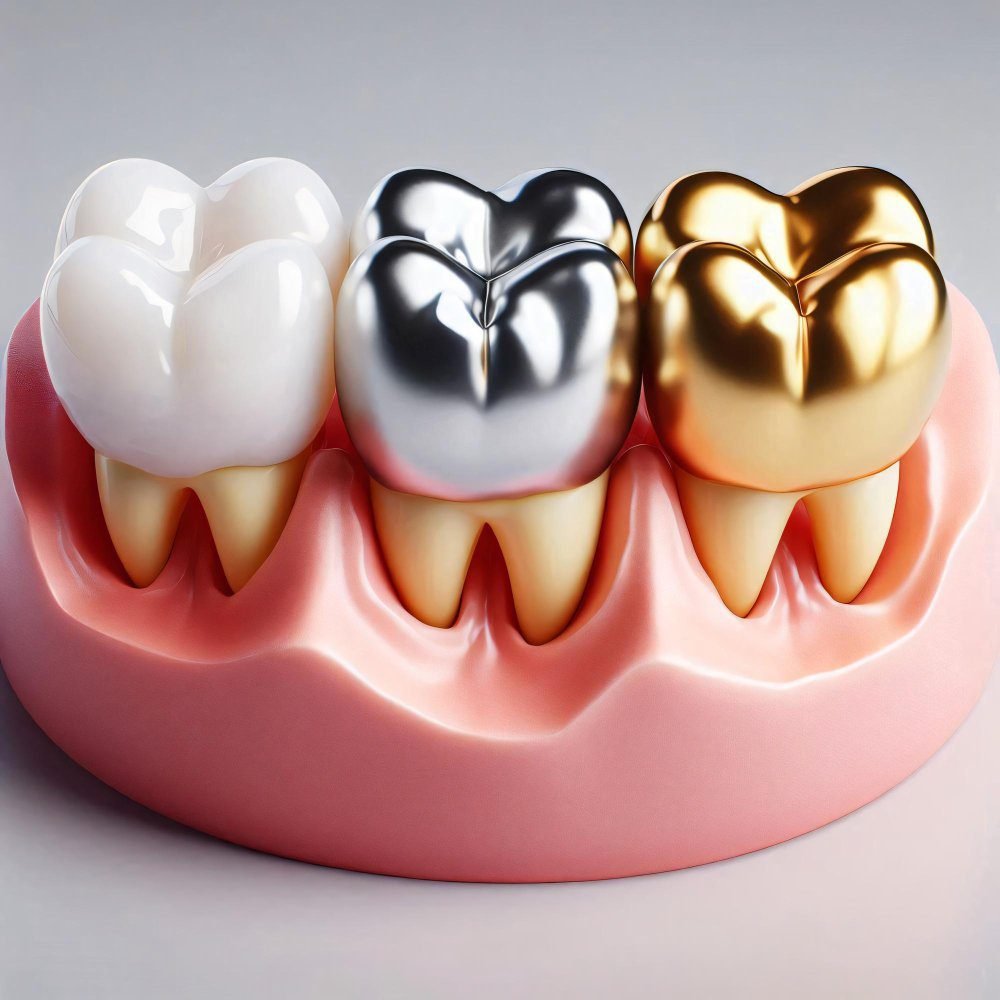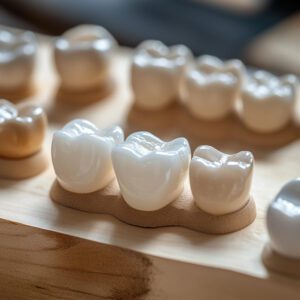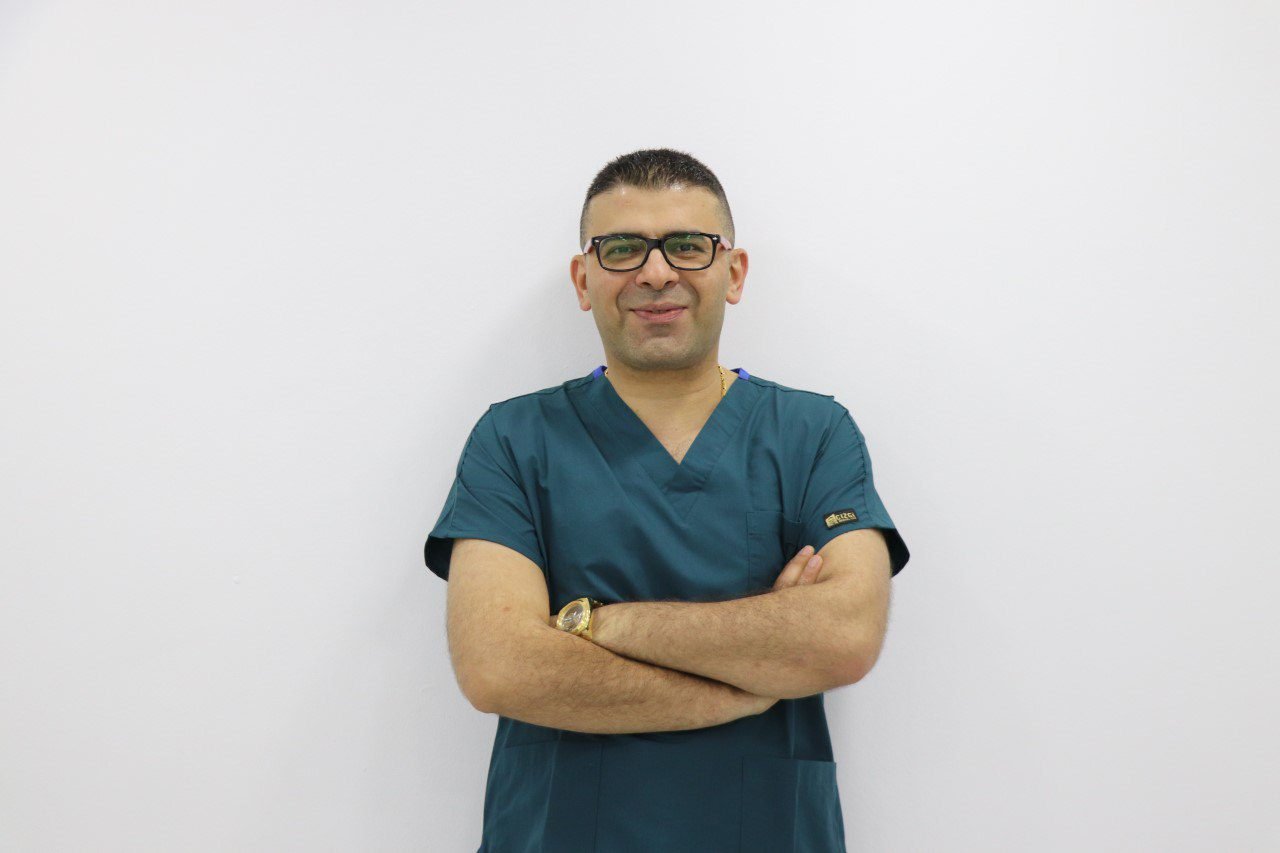Introduction to Dental Fillings
Dental fillings play a crucial role in restorative dentistry, providing an effective solution for a variety of dental concerns. As one of the most frequently used treatments, fillings are primarily used to restore the functionality and integrity of teeth that have been compromised by cavities, decay, or other forms of damage. A filling serves to “fill” the space left after the removal of decayed tissue, effectively halting the progression of the damage and alleviating discomfort associated with tooth sensitivity and pain.
The need for dental fillings often arises due to several common factors. The most prevalent reason is dental caries, commonly known as cavities, which develop as a result of poor oral hygiene, leading to the degradation of tooth enamel by bacteria. Additionally, fillings may be necessary for teeth that have experienced physical trauma, such as fractures or chips, which can occur from accidents or the wear and tear associated with grinding teeth. In some cases, fillings are also employed to prevent further decay in teeth that exhibit early signs of damage.
Timely treatment is essential when it comes to dental fillings. Delaying intervention could lead to more severe complications, including extensive decay, tooth loss, or the need for more invasive procedures such as root canals. Regular dental check-ups can help identify issues early, ensuring that fillings are applied before the damage escalates. It is recommended that individuals maintain optimal oral hygiene and seek professional advice if they suspect they may require a filling. Understanding the importance of maintaining dental health is critical in today’s society, and being proactive about potential issues can significantly enhance long-term outcomes.
Types of Dental Fillings
Dental fillings are essential components in restorative dentistry, used primarily to repair teeth affected by decay, cracks, or wear. Two of the most common types of fillings are white fillings, also known as composite fillings, and metal fillings, typically referred to as amalgam fillings. Understanding the material composition and properties of these fillings can aid patients in making informed decisions regarding their dental care.
Composite fillings are primarily made from a mixture of resin and fine glass particles, offering a tooth-colored solution that blends seamlessly with the natural appearance of teeth. This aesthetic advantage makes composite fillings particularly popular among patients seeking discretion in their dental repairs. Besides their visual appeal, composite fillings bond chemically with the tooth structure, providing additional strength and reducing the risk of future cracks. They are often used for smaller fillings or repairs in the front teeth where visibility is a consideration.
On the other hand, amalgam fillings consist of a blend of metals, including silver, mercury, tin, and copper. Known for their durability and strength, metal fillings are commonly used in the back teeth where the pressure from chewing is most significant. Amalgam fillings are less prone to wear and can last several years, making them a reliable choice for extensive cavities. However, their metallic appearance may not appeal to patients who prioritize aesthetics.
Both types of fillings have unique advantages and potential drawbacks, contributing to the ongoing discussion regarding which option is most suitable for individual dental needs. A thorough evaluation by a dental professional, taking into account the size and location of the cavity as well as the patient’s personal preferences, is recommended when selecting the appropriate dental filling type. This ensures that the selected filling aligns with both functional and cosmetic considerations.
White Fillings Explained
White fillings, also known as composite resin fillings, are a popular choice among patients for their aesthetic appeal and functional advantages. Made from a mixture of plastic and glass, these fillings can be closely matched to the natural color of the tooth, making them less noticeable than traditional metal fillings. This characteristic makes white fillings a preferred option for individuals concerned about the visual impact of dental restorations, particularly in visible areas such as the front teeth.
One of the significant benefits of white fillings is their excellent bonding capability. The composite resin adheres strongly to the tooth structure, which not only restores the tooth’s shape and function but also reinforces its integrity. This bonding property reduces the risk of fractures and increases the overall strength of the tooth. Additionally, these fillings can be applied in a single visit, thus providing a convenient option for patients seeking efficient treatment.
Another notable advantage of white fillings is that they are mercury-free, which addresses health concerns associated with the use of dental amalgams. Patients who prefer a more biocompatible solution often opt for white fillings due to their non-toxic composition. Furthermore, white fillings can be suitable for various dental situations, whether addressing minor cavities in the front teeth or larger restorations in the back teeth. While traditionally, metal fillings were often recommended for the back teeth due to their durability, advancements in materials have improved the longevity of white fillings significantly.
In terms of lifespan, white fillings can last between five to fifteen years, depending on factors such as the location of the filling, the patient’s oral hygiene habits, and their dietary choices. Despite this variability, with proper care, many patients find that white fillings remain a durable and effective choice for their dental restoration needs.
Metal Fillings Explained
Metal fillings, also known as amalgam fillings, have been a staple in restorative dentistry for over a century. They are composed of a mixture of metals, including silver, mercury, tin, and copper, which provides a robust and durable solution for tooth restoration. One of the primary advantages of metal fillings is their exceptional strength, making them suitable for areas of the mouth that experience significant pressure from chewing, such as molars. In fact, metal fillings can last anywhere from 10 to 15 years, sometimes even longer, when maintained properly. This longevity contributes to their cost-effectiveness, as patients may find themselves saving money in the long run due to the reduced need for replacements.
Despite their effectiveness and durability, there are a few concerns associated with metal fillings. For one, some individuals may experience allergic reactions to the materials used in amalgam, particularly the mercury component. Although the levels of mercury in dental amalgam are considered safe by various health authorities, patients with sensitivities may wish to explore alternative filling options. Furthermore, from an aesthetic standpoint, metal fillings do not blend in with the natural color of teeth, which may be a significant drawback for those concerned about dental appearance. The visible silver hue can alter a person’s smile, making it a less appealing option for some.
In terms of cost, metal fillings are generally less expensive than their composite counterparts. However, prices can vary based on dental clinics and the complexity of the procedure. Patients in Istanbul should research and compare various clinics to ensure they receive high-quality care at a reasonable price. Additionally, understanding the pros and cons of metal fillings will empower patients to make informed decisions regarding their dental health and aesthetic preferences.
Comparing White and Metal Fillings
When evaluating dental fillings, both white (composite) and metal (amalgam) options have distinct characteristics that may influence an individual’s choice. A significant factor is appearance: white fillings closely match the natural color of teeth, making them an ideal choice for visible areas such as front teeth. In contrast, metal fillings, typically made from a mixture of metals including silver and tin, are more noticeable but are often used in posterior teeth where aesthetics are less of a concern.
Longevity is another critical aspect that differentiates these two types of fillings. Metal fillings are known for their durability and can last over a decade with proper dental care. White fillings, while aesthetically pleasing, tend to have a shorter lifespan, usually lasting about five to seven years. This discrepancy in longevity can impact the long-term costs associated with dental work, as more frequent replacements of white fillings may be necessary.
Cost is another consideration when deciding between white and metal fillings. Metal fillings generally have a lower upfront cost compared to white fillings, which can be more expensive due to the materials and labor involved in placement. However, it’s important to note that the total cost can vary based on individual needs and circumstances, making a direct cost comparison somewhat complex.
Suitability for various types of cavities forms another crucial point of examination. Metal fillings are often preferred for larger cavities due to their strength and resilience. Conversely, white fillings are recommended for smaller cavities and areas requiring greater cosmetic appeal, albeit with caution regarding their usage in more extensive restorative procedures.
Lastly, potential health concerns may arise with the use of metal fillings. Some individuals express concerns regarding mercury exposure from amalgam fillings, although dental organizations maintain that amalgam is safe. This concern adds another layer of complexity to the decision-making process when it comes to choosing the appropriate filling for one’s dental health.
Considerations When Choosing Fillings
When selecting dental fillings, there are several critical factors to consider that extend beyond mere aesthetics. One of the primary considerations is the location of the cavity. Fillings are commonly placed in areas subjected to significant chewing pressure, such as molars. In these cases, metal fillings, particularly amalgam, may be preferable due to their durability and strength. Conversely, for cavities situated in visible areas, such as front teeth, patients may lean towards white fillings, or composite resins, which offer a more natural appearance. It is vital to assess the specific dental needs and cavity locations to make an informed choice.
Another essential factor involves the patient’s personal health history. Individuals with allergies to certain metals may not be suitable candidates for metal fillings. Alternatively, patients with a history of dental issues might prefer the ease of application and strength that metal fillings provide. Moreover, certain health concerns might influence the choice of materials; for example, patients who require minimal intervention or who prioritize biocompatibility may favor composite resins. Consulting with a dental professional about one’s health history plays a pivotal role in the decision-making process.
Financial considerations are also significant when choosing between white and metal fillings. Generally, metal fillings, particularly amalgam, tend to be more cost-effective than white fillings. However, it’s important to assess the long-term costs associated with durability and potential replacements. Aesthetic preferences cannot be overlooked as well; while some patients prioritize a natural look, others may prioritize the durability and longevity of their fillings. Balancing these considerations can empower patients to select fillings that not only align with their health needs but also match their financial and aesthetic expectations.
Finding the Best Dental Clinic in Istanbul
Choosing the right dental clinic in Istanbul is a crucial step for individuals seeking effective dental care. The diverse array of dental practices available can be overwhelming, yet there are fundamental criteria that can simplify the selection process. One of the primary factors to consider is the clinic’s reputation. Engaging in thorough research, such as examining ratings and testimonials from former patients, can provide insights into the quality of care available at a specific clinic. Sustained positive reviews often indicate reliable services.
Another important element is the qualifications of the dentists practicing at the clinic. It is essential to verify the educational background and experience of the dental professionals. A highly qualified dentist will have completed extensive training and certifications, particularly in specialized areas such as cosmetic dentistry or orthodontics. Clinics that prioritize ongoing education and training for their staff often exhibit dedication to providing up-to-date treatment options, which is vital in the ever-evolving field of dentistry.
In addition to reputation and qualifications, prospective patients should assess the range of services offered by the clinic. A comprehensive dental clinic in Istanbul will provide a variety of services, including preventive care, restorative procedures, and cosmetic dentistry. This is essential because it ensures that the clinic can address multiple dental needs, eliminating the necessity for referrals to other practitioners.
Lastly, it’s beneficial to look into patient reviews and feedback regarding the clinic’s atmosphere, appointment scheduling, and customer service. A positive patient experience typically encompasses attentive staff and a welcoming environment, both of which significantly aid in reducing anxiety associated with dental visits. By considering these criteria, patients can make an informed choice when selecting the best dental clinic in Istanbul for their needs.
Dr. Abdurrahman Ozturk’s Clinic: An Overview
Dr. Abdurrahman Ozturk’s clinic, located in the vibrant city of Istanbul, Turkey, stands as a beacon of excellence in dental care. Renowned for its patient-centered approach, the clinic combines modern technology with compassionate service to ensure a comfortable environment for all patients. The clinic is equipped with state-of-the-art facilities that incorporate the latest advancements in dental technology, positioning it as a leading choice for those seeking effective and high-quality dental treatments.
At the helm of this esteemed clinic is Dr. Abdurrahman Ozturk, a highly qualified dentist with extensive experience in various dental disciplines. Dr. Ozturk is known for his meticulous attention to detail and commitment to ongoing education, enabling him to stay updated on the latest procedures and technological innovations. His qualifications bolster the reputation of the clinic, assuring patients of expert care tailored to individual needs.
The clinic offers a comprehensive range of services, from routine check-ups and preventive care to advanced restorative procedures, such as dental fillings in both white and metal options. Each treatment plan is customized, ensuring adherence to the highest standards of dental health while considering the preferences and concerns of each patient. Patients can expect a thorough consultation process, where their dental needs are fully assessed before any treatment is initiated.
The typical patient experience at Dr. Ozturk’s clinic is designed to prioritize comfort and satisfaction. Patients are greeted by a friendly staff and taken through a seamless process that minimizes anxiety. Clear communication and empathetic care are integral to the clinic’s philosophy, making it a highly regarded option for dental care in Istanbul. The dedication to innovation and patient welfare ensures that every visit leaves clients feeling confident and well-informed about their dental health.
Patient Testimonials and Success Stories
At Dr. Ozturk’s clinic, numerous patients have shared their experiences, highlighting the positive impact of dental treatments, especially fillings, on their oral health and overall well-being. One patient, Maria S., emphasized her delight after receiving white composite fillings, stating, “I was apprehensive about getting fillings, but the procedure was quick and virtually painless. The aesthetic results are fantastic, and I can’t even tell where the work was done!” This reflects the high-quality care and advanced techniques employed in the clinic, allowing for both functional and cosmetic benefits.
Another testimonial from James K., who opted for metal fillings, noted, “I initially chose metal fillings for their durability, and I am thoroughly satisfied. Dr. Ozturk explained everything clearly, and I felt supported throughout the treatment process. The aftercare guidance was invaluable.” This emphasizes the comprehensive care patients receive, ensuring they are well-informed and comfortable throughout their dental journey.
A significant number of patients also appreciate the friendly atmosphere of the clinic. Sandra T. remarked, “The staff made me feel at home right away. Not only did they take care of my fillings efficiently, but they also made sure I was relaxed and informed. I genuinely appreciate their dedication to patient satisfaction.” Such narratives illustrate the clinic’s commitment to providing not only quality dental work but also exceptional customer service.
Furthermore, many patients have shared their success in restoring confidence and comfort through their dental health improvements. David L., who underwent a series of fillings, concluded, “I used to avoid smiling because of my teeth. Now, I feel I can smile freely, thanks to the fantastic results from Dr. Ozturk’s clinic. The transformation has been life-changing.” These testimonials embody the ethos of patient-centered care, underscoring the exceptional quality of service and the effectiveness of dental fillings offered at Dr. Ozturk’s clinic.












